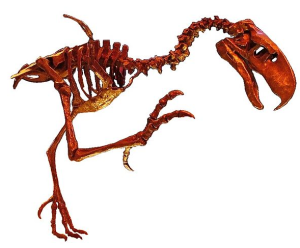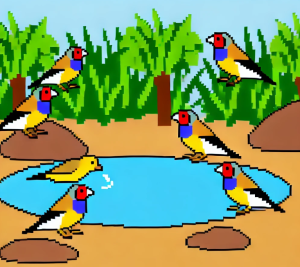
The Magic of the Mind
How Magicians Unveil Human and Animal Cognition
Imagine watching a magician pull off a seemingly impossible trick: a coin vanishes from their hand, only to reappear behind your ear. You’re left stunned, wondering how your eyes could have missed the sleight of hand. Now, what if I told you that this trick isn’t just about fooling humans—it’s also revealing how the minds of animals work, too?
Magic has captivated humans for centuries, stirring feelings of wonder and disbelief. What you may not know is that magicians, by manipulating attention, perception, and memory, are unwittingly engaging in what psychologists now call “the science of magic.” Even more fascinating is that researchers are taking these techniques and using them to study cognitive processes in both humans and animals. Yes, even animals can fall for a good magic trick. And this research is revealing important insights about how we, and other species, perceive the world.
How Magic Tricks Reveal Cognitive Blind Spots
Magicians don’t have mystical powers. Instead, they capitalize on our cognitive blind spots—areas where our brain fails to process all the information available to us. Have you ever seen a magician make a ball vanish by pretending to throw it? Your brain expects the ball to keep moving based on prior experience, but when the magician subtly conceals it, you’re fooled. This is known as the vanishing ball illusion. It shows that we rely heavily on expectations, which magicians manipulate to their advantage.
In the 1800s, magic was closely tied to early experimental psychology. Researchers like Alfred Binet explored how magic tricks exploited cognitive processes like attention and perception. While interest waned over the 20th century, modern psychologists are now recognizing that magic holds valuable lessons about how our minds work.
Take, for example, the change blindness phenomenon, where large changes in a visual scene go unnoticed because our attention is directed elsewhere. Magicians have been exploiting this for years, using misdirection to lead your eyes away from the method behind the trick. It’s a phenomenon that affects us all, whether we’re watching a magician or just navigating our daily lives.
A New Line of Research: Magic and Animal Cognition
What’s truly groundbreaking is how these same principles are being used to understand animal cognition. In recent years, scientists have started testing whether animals experience similar cognitive blind spots by adapting magic tricks to study how animals perceive the world. This comparative approach offers fresh insights into how different species process information.
For example, Eurasian jays—birds known for their intelligence—were shown a version of the classic “cups and balls” magic trick, in which an object appears to vanish under a cup. Researchers found that the jays, like humans, were baffled when the object unexpectedly disappeared. Their delayed reaction suggests that they, too, form expectations about what should happen, just like humans.
In another experiment, researchers used the French drop, a sleight-of-hand technique where a coin appears to move from one hand to the other but is actually hidden in the original hand. Jays and monkeys were tested to see if they, like humans, would fall for the trick. Interestingly, while some primates were fooled, the jays, who don’t have hands themselves, were not. This suggests that having expectations based on experience with hand movements plays a crucial role in being deceived by this trick.
What Magic Tells Us About Memory and Attention
Magic also reveals how easily our memories can be manipulated. One famous trick involves bending a key in front of an audience’s eyes. Later, when spectators are asked what happened, they often remember the key bending more than it actually did because the magician suggested that the bending was still happening even after the effect ended. This trick shows how our brains can be coaxed into forming false memories.
It’s not just humans who are vulnerable to memory manipulation, either. Jays, who are expert food stores, remember not just where they hid food but also how long ago they hid it and whether other birds were watching. When researchers used magic tricks to swap the jays’ stored food with something else, the birds showed surprise, demonstrating a sophisticated memory for past events and the ability to anticipate future ones.
The Evolution of Deception: Are Animals Natural Magicians?
Some animals are natural tricksters. Chimpanzees, for instance, have been observed using deceptive tactics in the wild, like looking in one direction to throw off a competitor before grabbing a desirable object from another. This kind of behavior mirrors the magician’s skill of misdirection—convincing the audience to focus on the wrong thing while the real action happens elsewhere.
Similarly, corvids (a family of birds that includes jays and ravens) use clever tactics to protect their food caches. They might pretend to bury food in one spot while secretly hiding it somewhere else, deceiving potential thieves. These behaviors suggest that deception, like magic, may have evolved as a survival strategy in both animals and humans.
Join the Conversation
Have you ever been fooled by a magic trick? Do you think animals experience wonder and surprise the way humans do when faced with the impossible? Let us know your thoughts in the comments below!
Why This Research Matters
Why should we care about studying magic in animals? For one, it helps us understand the roots of cognitive processes like attention and perception. By comparing how magic tricks fool different species, researchers can pinpoint which aspects of cognition are shared across species and which are unique to humans. This can offer insight into how our cognitive abilities evolved and how animals experience the world.
Moreover, the study of magic reveals how easily our minds can be deceived, helping us become more aware of our cognitive biases. This knowledge has applications far beyond magic shows. It can improve how we design educational tools, understand human error in high-stakes environments like aviation or healthcare, and even refine how we communicate scientific ideas to the public.
Join the Conversation
- Have you ever noticed yourself falling for everyday “magic” moments, like missing a change in your environment because your attention was elsewhere?
- How do you think animals might use deceptive tactics in the wild? Can we learn from them?
Explore and Learn with Science:
Dive into groundbreaking research and inspiring stories with ‘This Week in Science’! Perfect for teachers and science enthusiasts, our free weekly newsletter expands your horizons in teaching and learning. Join us today and reshape your engagement with science. If you liked this blog, please share it! Your referrals help This Week in Science reach new readers.



